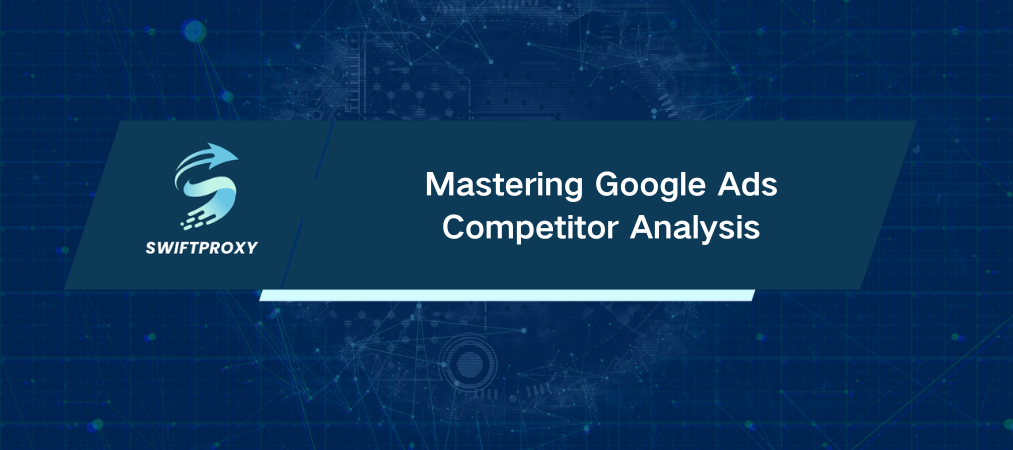Mastering Google Ads Competitor Analysis

The digital ad space is fierce. In fact, Google is set to rake in nearly $340 billion from advertising by 2027—accounting for 40% of global digital ad spend (Statista). With such massive investment flowing into Google Ads, you can't afford to simply run campaigns without a deeper understanding of the competition.
This is where competitor analysis becomes not just useful, but essential. By breaking down your competitors' Google Ads strategies, you can uncover insights that will give your ads a serious edge. From refining your ad copy to spotting untapped market opportunities, analyzing competitors' campaigns is a goldmine for boosting your ROI.
Why Competitor Google Ads Analysis Is a Game Changer
Competitor ads are more than just a "watch and learn" opportunity—they're a treasure trove of data waiting to be mined. Here's why competitor analysis matters:
Gain a Clear View of Competitor Strategies
Competitor ads show you exactly how others target audiences, craft their messaging, and structure their bids. Study their ad copy, landing pages, and keywords to understand what's working for them. It's not about copying; it's about improving. If their CTA resonates, try something similar—but with your unique twist.
Budget Insights
Tracking how much competitors are spending reveals their commitment to specific keywords and campaigns. If they're consistently bidding on high-value terms, it's time to reevaluate your budget allocation. Even better, you'll learn which keywords to avoid or pursue, helping you spend your ad dollars more wisely.
Discover Local & International Opportunities
Competitors adjust their ad strategies based on location. By analyzing how they tailor offers to different regions, you'll spot under-served areas. If a competitor dominates one country but barely shows up in another, you've found your chance to shine in a less competitive space.
Spot Gaps & Uncover New Opportunities
Competitor ads reveal what they're missing. If they target high-intent keywords but neglect educational or informational search terms, that's your opening to capture prospects early in the buying journey. Keeping an eye on new trends—like the rise of video ads—lets you stay ahead of the curve.
How to Evaluate Competitor Google Ads
So, how do you actually analyze your competitors' Google Ads? It can be done manually or with the help of automated tools. Let's break down both approaches:
Manual Methods: Quick but Limited
Google Ads Preview Tool
The Google Ads Preview and Diagnosis Tool is a great starting point for a snapshot of competitor ads. It allows you to see ads based on specific keywords, locations, and device types. Here's how to use it:
Log into your Google Ads account.
Go to Tools & Settings > Ad Preview and Diagnosis.
Enter a keyword, select a location, language, and device type.
Analyze the results and see which competitors are showing up.
Pros:
Provides an unbiased view free from your search history.
Free with a Google Ads account.
Cons:
Manual effort required for each keyword and location.
Doesn't provide deeper insights into ad spend or performance.
Incognito or Private Browsing
Running searches in incognito mode eliminates the personalization from your search history, offering a more neutral view of ads. It's a simple and easy way to check what competitors are doing.
Pros:
No additional tools needed.
Reduces the effect of past searches on your results.
Cons:
IP address and location still influence results.
Labor-intensive for large-scale monitoring.
Automated Methods: Scale & Precision
Proxies for Geo-Specific Data
Using proxies allows you to view Google Ads from different locations without being restricted by your IP address. You can collect local ad data to see how competitors target specific markets.
Here's how you might use proxies to scrape Google Ads data in Python:
import requests
proxies = {
"http": "http://your_proxy:port",
"https": "https://your_proxy:port"
}
url = "https://www.google.com/search?q=best+marketing+software"
headers = {
"User-Agent": "Mozilla/5.0 (Windows NT 10.0; Win64; x64) AppleWebKit/537.36 (KHTML, like Gecko) Chrome/110.0.0.0 Safari/537.36"
}
response = requests.get(url, headers=headers, proxies=proxies)
print(response.text) # Displays the HTML of the search results
Pros:
Bypasses location restrictions for precise local data.
Scales easily for large volumes of data.
Cons:
Requires setup and ongoing proxy management.
Extra costs for high-quality proxies.
Scraper APIs for Streamlined Data Collection
For larger-scale, ongoing analysis, scraper APIs allow you to pull structured data about Google Ads—ads, display URLs, landing pages, and more—on a regular basis.
Here's an example of how to use the Scraper API:
import requests
api_url = "https://example.com/google-search"
params = {
"q": "best marketing software",
"location": "New York, USA",
"device": "desktop",
"api_key": "your_api_key"
}
response = requests.get(api_url, params=params)
ads_data = response.json()
print(ads_data) # Outputs structured ad data
Pros:
Highly scalable for ongoing analysis.
Automates the collection of large datasets.
Cons:
Requires initial setup and configuration.
Some API plans have usage limits or cost considerations.
Turning Data Into Action
Once you've gathered the data, it's time to analyze the metrics that matter:
Ad Frequency:
If a competitor appears consistently in top positions, they're likely betting big on those keywords. Match or surpass their bids to stay competitive.
Ad Copy Variations:
Track changes in messaging. If a competitor's ad copy evolves frequently, it's probably because they're A/B testing. See what works for them and use it to refine your copy.
Landing Page Strategies:
Competitors with optimized landing pages are focusing on conversions. Take a close look at their structure, speed, and design. Can you do better?
Regional Variations:
Competitors might dominate one market but struggle in another. Use this to your advantage by targeting less competitive areas.
Once you have a clear view, implement what you've learned. Tweak your ad copy, adjust your bidding strategies, and optimize your landing pages. Keep testing, keep iterating. Regular monitoring ensures you stay on top of shifts in competitor strategies.
Conclusion
In a market where every click counts, competitor analysis isn't just a luxury—it's a necessity. By understanding how competitors bid, craft ad copy, and structure their campaigns, you can fine-tune your own strategy to outperform them.

















































